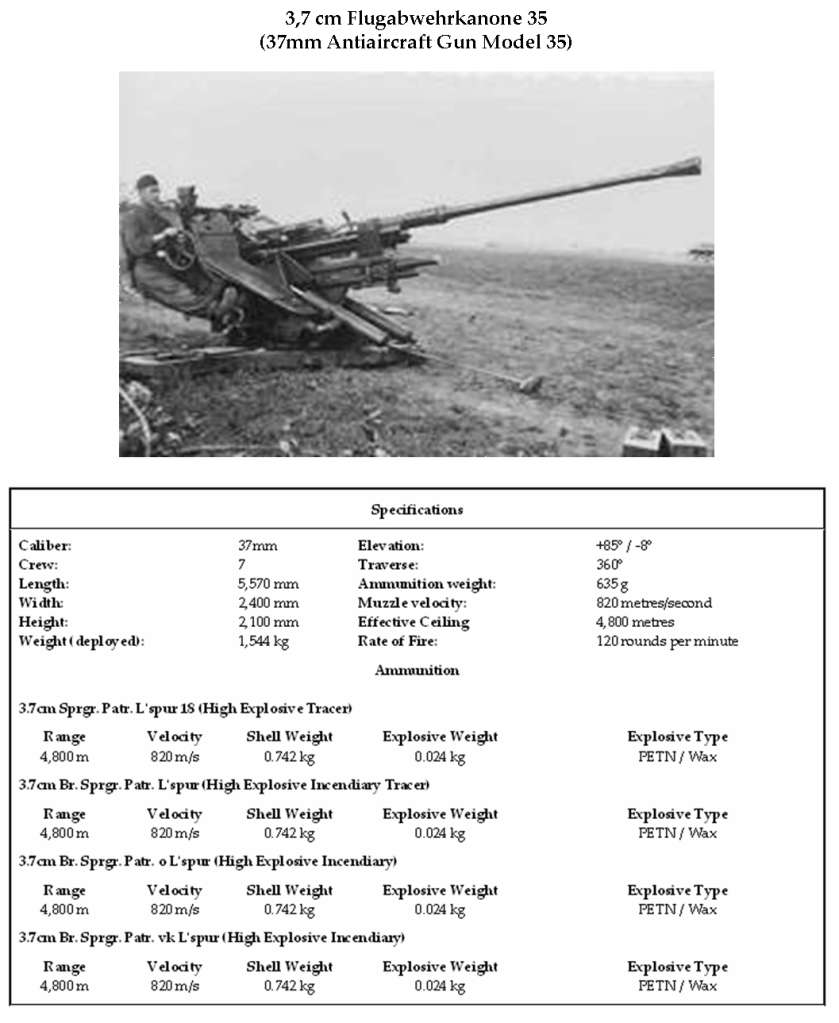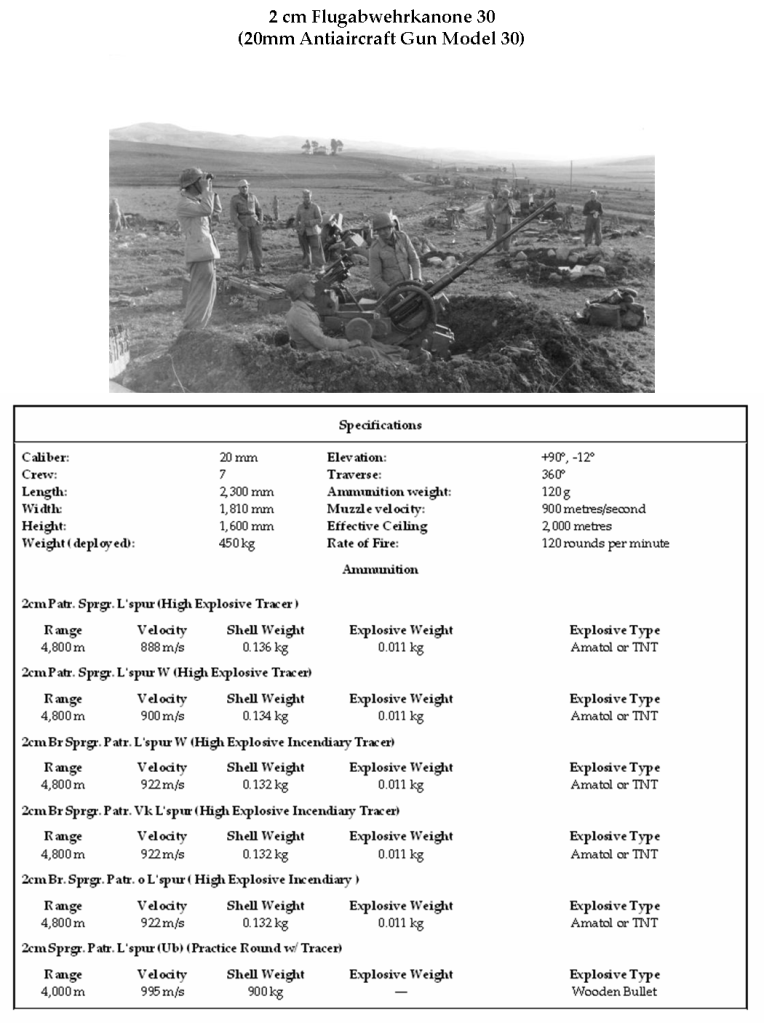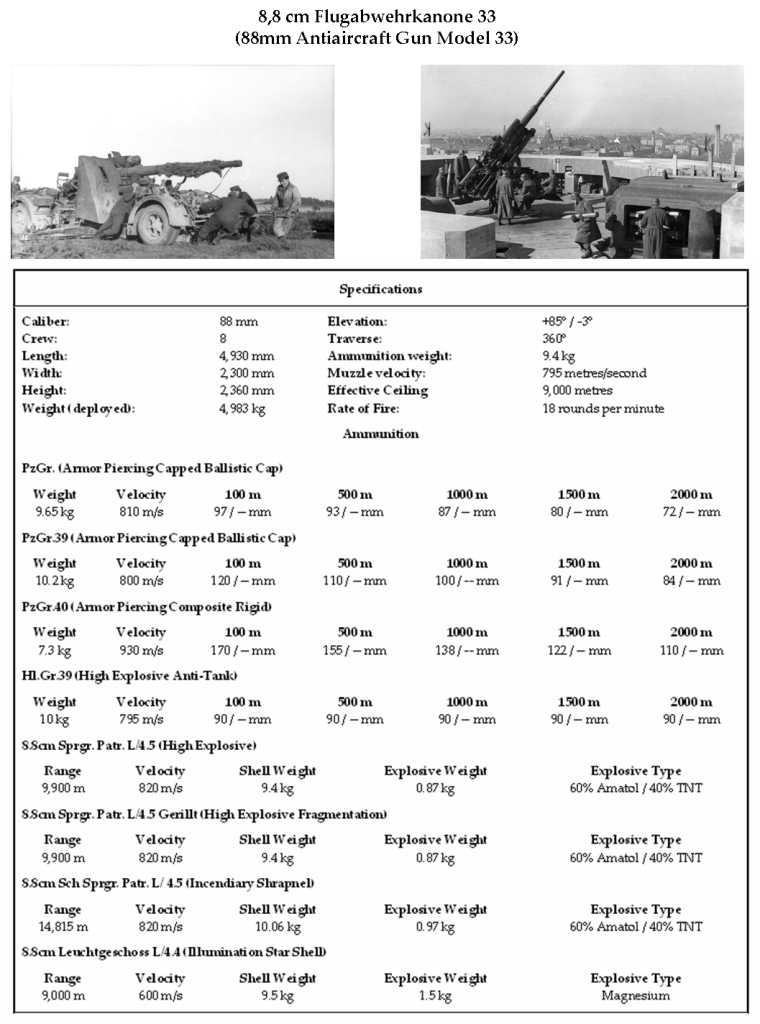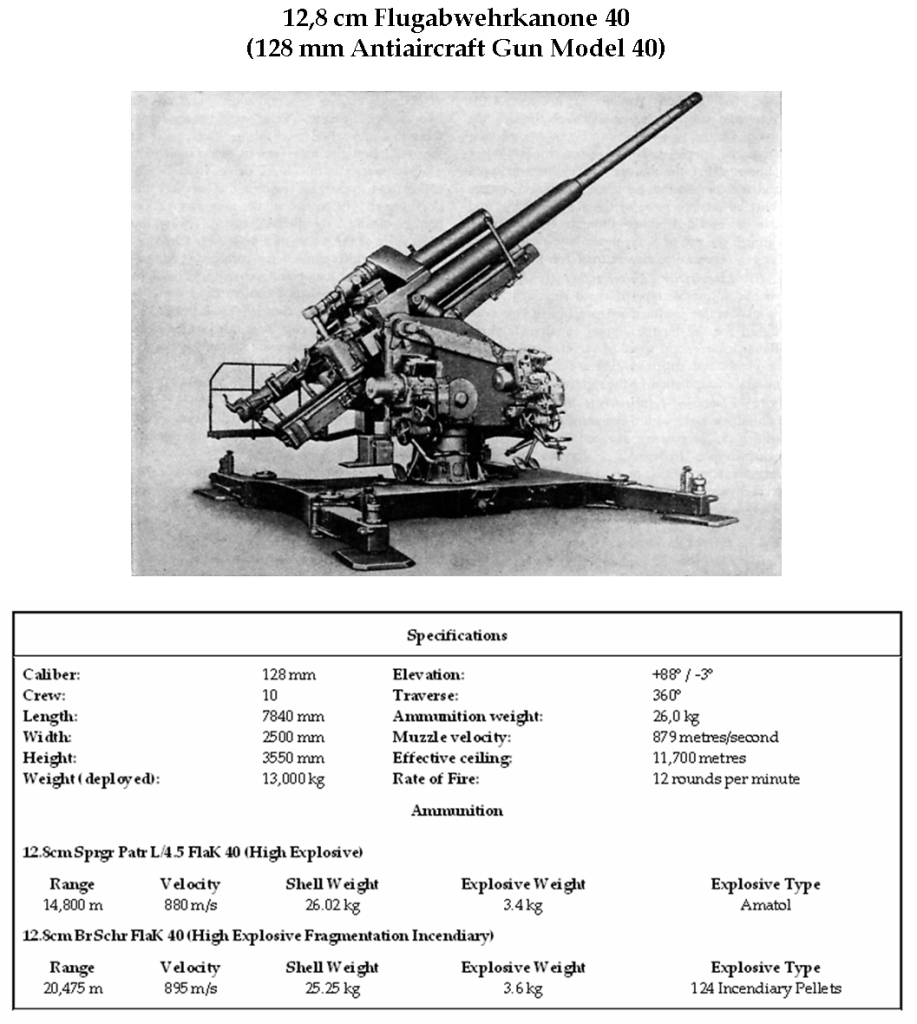(37mm Antiaircraft Gun Model 35)
The 37mm Antiaircraft Gun Model 35 was developed by Rheinmetall from the 3.7 cm Flugzeugabwehrkanone 18, a land-service derivative of a 37mm antiaircraft gun built for the Kriegsmarine. Few examples of the FlaK18 were constructed, as it was considered too heavy for field service. The Model 35 was considerably lighter, the complete gun, including the wheeled mount, weighed 1,757 kilograms.
It was adopted by the Heer, and more so by the Luftwaffe, for the defence of military installations from low-altitude and dive-bombing attacks. It is standard equipment of light antiaircraft batteries of both services.
The weapon was designed by Rheinmetall-Borsig AG, Düsseldorf, but manufactured in that firm’s plant at Apolda in Thuringia. To meet the demand of the Heer, Luftwaffe and Kriegsmarine, a production group has been built up comprising:
Rheinmetall-Borsig AG, Werk Apolda
Berndorfer Metallwarenfabrik, Arthur Krupp AG, Werke Berndorf
Dürkoppwerke AG, Bielefeld
Polte Armaturen und Maschinenfabrik AG, Werk Fichtestraße, Magdeburg-Sudenstadt
Through December 1939 more than three thousand examples of this weapon have been delivered to the Heer and production was continuing.






